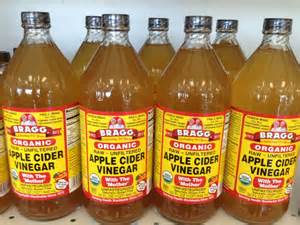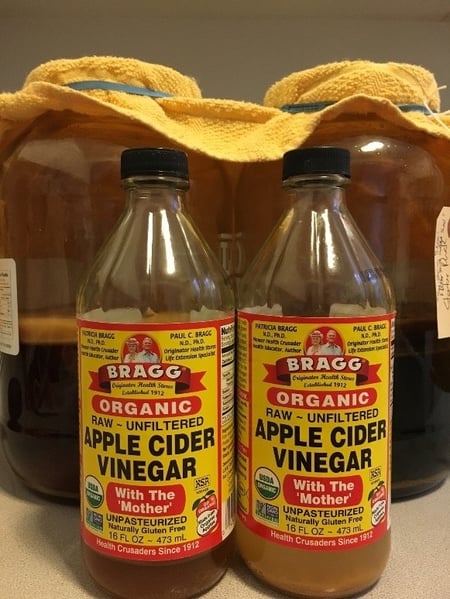In general, when things spoil within the realm of food and cooking, it is seen as a negative thing. “Controlled spoilage” however, is the creation of some of life’s greatest and tastiest foods. Sauerkraut, salamis, pickles and kimchi are all examples of controlled spoilage - better known as the art of fermentation.
Fermentation, in essence, is the metabolic processes of yeasts or bacteria that convert sugar into acids, gases and alcohols. While there are many different topics of discussion in the realm of fermentation, I want to shed light one of the easier and thriftier forms of it: vinegar. We all, at one point or another, have had bottles of wine or beer that we weren’t able to finish in one sitting. Despite our best efforts to save the leftovers for another day, those remaining servings can turn “off” while waiting to be consumed. Making vinegar is a great way to put those “spoiled” leftovers to good use.
Generally speaking, vinegar is not the most expensive ingredient to purchase at the grocery store, however, it is probably the one of the more tasteless options at our disposal. Anyone who was tried a true “Balsamico di Modena” or a “Vinaigre de Bordeaux” (not the five dollar brands you get at grocery chains) knows the culinary potential of vinegar. In the time before food globalization and lemons being the ubiquitous option for adding an acidic edge to your foods, homemade vinegars from leftover alcohol production were what ancient cooks used.
In a very tiny nutshell, vinegar making is the act of farming and growing a wild strain of bacteria that lives all around us, like yeast, to convert the alcohol into acetic acid (aka table vinegar) in the presence of oxygen. If you’ve ever tasted an opened bottle of wine that was a few weeks old, you have probably already tasted this process in action. Acetic acid bacteria (ABB) are from the Acetobacteraceae family and are found omnipresent in nature, especially in flower nectar and bruised fruit. These bacteria like to form a slim puck (like kombucha) or cellulose colony on the top of the fermenting product and slowly oxidize sugars and ethanol alcohol into table vinegar; pests if you’re a brewery or a winery, bff’s if you’re trying to make vinegar.
ABB are finicky creatures; they don’t work in high alcoholic environment (up to 10%-ish) and only process in the optimum temperature range of between 80-85’F. The true art of fermentation or “controlled spoilage”, whether it be sourdough bread, charcuterie, cheese or kimchi, is to invite the good bacteria before the bad bacteria have a chance to take hold. You can invite good acetic acid bacteria to colonize any leftover wine or beer by two different means, either buying or starting your own culture. If you choose to buy a vinegar starter, or Mothers, online or start with buying a “raw vinegar with mother” of your choosing (I always use Braggs Raw Cider Vinegar), make sure that its roughly 50/50 starter culture to fermentable product for a healthy start.

The acid from the starter allows the good to take hold and prevent the bad from setting up shop (like yeasts) and introduces ABB directly to the party. Start a few different starter cultures and choose the strongest of the bunch to continue the Orleans method. To start your own, find or make some of your own hard cider by fermenting fresh apple juice into alcohol then just exposing it to oxygen. As I mentioned earlier, ABB like bruised fruit as a natural place to hang out, so it’s easier than you would think. Use this raw apple cider vinegar to continue into the Orleans method.
The Orleans method, the iconic slow moving French method of making vinegar, is basically adding fresh alcohol to a barrel and allowing the ABB colony and oxygen to convert the alcohol into vinegar within 1-3 months, then allowing it to age for 12-15 months. Half the finished vinegar is poured off carefully through the spigot and fresh alcohol is poured back into the barrel so as to not disturb the Mother floating on top, and allowing the process to continue. If your Mother falls, another will take its place; however, you don’t want to leave it there on the bottom while you’re aging, as it will only rot and cause an off flavor. Strain the finished product and allow it to age using the slime puck to start a new colony with fresh alcohol and any leftover vinegar. You can exchange this colony/puck into a different type of alcohol (cider to beer, or beer to wine) and continue your newly founded bacteria farm. For more information on the subject please visit Nordic Food Lab; they’ve written a masterpiece on the subject.
Here is my method:
Using a starter culture, whether store bought or made, I expose leftover beer in a 50/50 mix and expose it to oxygen.

Within two weeks a slime puck forms on top and I allow it to convert for the next month.
After about a month of conversion, I empty the container, saving what I need to age further, then expose fresh beer and leftover vinegar to the old mother. After dating and tagging the product, I cover it with a kitchen towel, making sure to not cover it completely so as to allow light in.
The final product is to be aged further and the next page ready to start a new conversion. I broke off a piece of mother to start two completely new colonies.
Easy enough? Good! Now go home and try bacteria farming for yourself. Once you have your homemade vinegar, try it in a shrub or a variety of vinaigrettes. The Chopping Block covers vinaigrettes extensively in ourFlavor Dynamics class, and we have one coming up this Sunday, October 23 at 10am at Lincoln Square.
